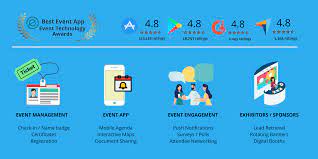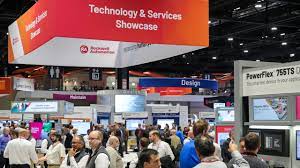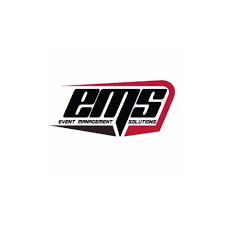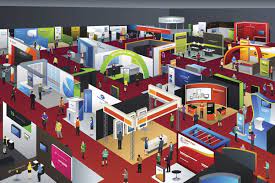Trade Show Digital Signage: Enhancing Engagement and Impact
Trade shows have long been a platform for businesses to showcase their products, services, and innovations. In today’s digital age, incorporating technology into these events has become essential to stand out from the crowd. One such technology that has gained significant popularity is trade show digital signage.
Digital signage refers to the use of electronic displays, such as LCD or LED screens, to convey information and engage audiences. When strategically implemented at trade shows, it can transform the way businesses communicate with potential customers and create lasting impressions. Here are some key benefits of incorporating digital signage into your next trade show exhibit:
- Captivating Visual Appeal: Traditional static banners and posters often fail to capture attention in a crowded trade show environment. However, dynamic digital signage with vibrant colors, high-resolution graphics, and eye-catching animations can instantly attract visitors’ attention. By displaying compelling content on these screens, businesses can effectively convey their brand message and create a memorable visual experience.
- Interactive Experience: Digital signage allows exhibitors to go beyond one-way communication by incorporating interactive elements. Touchscreens or motion sensors can enable visitors to interact with the displayed content, providing an engaging experience that encourages active participation. This interactivity not only enhances visitor engagement but also enables businesses to collect valuable data for future marketing efforts.
- Real-Time Updates: Trade shows are dynamic events where schedules, presentations, and product information may change frequently. Digital signage provides the flexibility to update content in real-time without the hassle of printing new materials or making manual changes. Exhibitors can instantly modify their messaging or showcase live social media feeds to keep attendees informed about the latest updates.
- Multimedia Capabilities: Unlike traditional print media, digital signage allows businesses to incorporate various multimedia elements into their displays. Videos, animations, product demonstrations, and customer testimonials can be seamlessly integrated into the content loop on these screens. This multimedia approach not only enhances the overall impact but also enables businesses to showcase their offerings in a more immersive and engaging manner.
- Branding and Customization: Digital signage offers businesses the freedom to customize their displays according to their brand identity and specific messaging requirements. From choosing the right color schemes and fonts to incorporating logos and taglines, exhibitors can create a cohesive visual experience that aligns with their brand image. This level of customization helps businesses differentiate themselves from competitors and leaves a lasting impression on attendees.
In conclusion, trade show digital signage has revolutionized the way businesses communicate at these events. By leveraging captivating visuals, interactivity, real-time updates, multimedia capabilities, and customized branding, exhibitors can enhance engagement levels and create a memorable experience for trade show attendees. Incorporating digital signage into your next trade show exhibit can be a game-changer in effectively showcasing your products or services while leaving a lasting impact on potential customers.
8 Benefits of Trade Show Digital Signage: Boosting Brand Visibility, Cost-Effective Marketing, Flexibility, Elevating Customer Experience, Amplifying Product Promotion, Tailored Messaging, Streamlined Monitoring and Analytics, Remote Control Anywhere
- Increased brand visibility and engagement
- Cost-effective marketing
- Flexibility
- Improved customer experience
- Enhanced product promotion
- Personalized messaging
- Easy monitoring and analytics tracking
- Ability for remote control from anywhere
Challenges of Trade Show Digital Signage: Cost, Reliability, Space Constraints, and Content Effectiveness
- Costly
- Unreliable
- Limited Space
- Ineffective Content
Increased brand visibility and engagement
Increased Brand Visibility and Engagement: The Power of Trade Show Digital Signage
In today’s fast-paced world, capturing the attention of potential customers can be a daunting task, especially at trade shows where competition is fierce. This is where trade show digital signage comes into play, offering businesses an effective solution to increase brand visibility and engagement.
Digital signage has the power to draw attention like no other medium. With its vibrant displays and dynamic content, it immediately grabs the eyes of attendees passing by your booth. By showcasing your products or services on these screens, you can create a visually captivating experience that leaves a lasting impression.
But it doesn’t stop there. Trade show digital signage goes beyond mere visual appeal. It enables businesses to engage attendees through interactive content. Touchscreens or motion sensors allow visitors to interact with the displayed information, encouraging active participation and creating a memorable experience.
Imagine having an interactive product demonstration on a digital screen, where attendees can explore features, watch videos, or even place virtual orders. This level of engagement not only piques curiosity but also establishes a deeper connection between your brand and potential customers.
Furthermore, digital signage offers endless opportunities for customization and branding. You can incorporate your company’s logo, colors, and taglines into the content loop to reinforce brand recognition. By consistently presenting your brand identity across all digital displays at the trade show, you establish a strong visual presence that sets you apart from competitors.
Another advantage of trade show digital signage is its flexibility in updating content in real-time. Whether it’s showcasing new product releases or sharing live social media feeds, you can keep attendees informed about the latest updates throughout the event. This real-time interaction helps build excitement around your brand and encourages attendees to visit your booth repeatedly.
In conclusion, trade show digital signage is a powerful tool for boosting brand visibility and engaging with potential customers effectively. Its captivating visuals, interactive features, customization options, and real-time updates create an immersive experience that leaves a lasting impact. By incorporating digital signage into your trade show strategy, you can increase brand recognition, attract more visitors to your booth, and ultimately drive business success.
Cost-effective marketing
Cost-effective Marketing: Trade Show Digital Signage
Trade shows are a fantastic opportunity for businesses to showcase their products and services to a targeted audience. However, traditional marketing methods such as print advertising or TV spots can be costly and may not always provide the desired results. This is where trade show digital signage comes in as a cost-effective alternative.
Digital signage offers businesses an affordable way to get their message across at trade shows. Unlike print advertising, which requires printing and distribution costs, digital signage only requires an initial investment in the hardware and content creation. Once set up, businesses can easily update and modify their messaging without incurring additional expenses.
Compared to TV spots or other traditional media, digital signage provides a more targeted approach. Businesses can tailor their content specifically for trade show attendees, ensuring that their message reaches the right audience. This targeted marketing strategy eliminates unnecessary expenses associated with reaching a broader audience that may not be interested in the products or services being showcased.
Furthermore, digital signage allows for dynamic content that can be easily adjusted based on real-time feedback or changing circumstances. This flexibility enables businesses to adapt their marketing messages on the fly without incurring extra costs for reprinting or reshooting advertisements.
Another cost-saving aspect of trade show digital signage is its ability to eliminate recurring expenses. With traditional methods like print advertising or TV spots, each new event requires additional investments in materials or airtime. In contrast, digital signage offers a reusable solution that can be used across multiple trade shows with minimal ongoing costs.
In conclusion, trade show digital signage presents a cost-effective marketing solution for businesses participating in trade shows. By eliminating printing and distribution costs, providing targeted messaging, allowing dynamic content updates, and offering reusable displays, digital signage helps businesses maximize their marketing budget while effectively reaching their desired audience at these events. Embracing this technology can significantly enhance a company’s presence at trade shows without breaking the bank.
Flexibility
Flexibility: Enhancing Trade Show Success with Digital Signage
In the fast-paced world of trade shows, adaptability is key to staying ahead of the competition. This is where trade show digital signage truly shines, offering businesses the flexibility to quickly change displayed content in response to customer feedback or changes in the show environment.
Gone are the days of printing and distributing new materials every time there’s a need for an update. With digital signage, exhibitors can effortlessly modify their messaging or visuals in real-time. This level of flexibility empowers businesses to react promptly to customer preferences and market trends, ensuring that their message remains relevant and impactful.
Customer feedback is invaluable for any business looking to improve its offerings. Digital signage allows exhibitors to gather immediate insights from attendees and adjust their content accordingly. Whether it’s incorporating specific product information, addressing frequently asked questions, or highlighting customer testimonials, businesses can tailor their displays on-the-fly based on real-time input.
Moreover, trade show environments are dynamic and subject to change at a moment’s notice. Perhaps there’s a sudden shift in the schedule or a new product launch announcement. With digital signage, exhibitors can instantly update their displays to reflect these changes. This agility ensures that visitors receive up-to-date information and helps businesses maintain a competitive edge.
The ability to adapt quickly also extends beyond content updates. Digital signage offers exhibitors the opportunity to experiment with different visuals or messages during the event itself. By monitoring audience responses and engagement levels, businesses can fine-tune their approach on-the-go and maximize impact.
Additionally, digital signage provides flexibility in terms of targeting specific audiences or segments within a trade show setting. Exhibitors can customize content based on visitor demographics or preferences by displaying different messages on different screens simultaneously. This targeted approach increases relevance and captures the attention of specific groups more effectively.
In conclusion, one major advantage of trade show digital signage is its flexibility. The ability to swiftly change displayed content in response to customer feedback or show environment changes empowers businesses to stay adaptable and relevant. By leveraging this flexibility, exhibitors can enhance visitor engagement, gather valuable insights, and make the most out of their trade show experience. So why not embrace digital signage and unlock its potential for your next trade show exhibit?
Improved customer experience
Enhancing Customer Experience: The Power of Trade Show Digital Signage
In the bustling environment of a trade show, providing a seamless and enjoyable customer experience is crucial for businesses to make a lasting impression. This is where trade show digital signage shines, offering an array of benefits that go beyond mere visual appeal. One significant advantage is its ability to improve customer experience in various ways.
Digital signage acts as an informative guide, helping attendees navigate through the event with ease. By displaying helpful information about the show, such as floor plans, schedules, and booth locations, it becomes a valuable tool for visitors to plan their visit efficiently. No more wandering aimlessly or searching for information desks – digital signage takes the guesswork out of finding relevant booths and displays.
Moreover, digital signage can be strategically placed to direct customers towards specific areas or highlight particular exhibitors. With clear and concise directions displayed on these screens, attendees can effortlessly find their way to the booths they are interested in. This not only saves time but also ensures that visitors have a seamless experience without any frustration or confusion.
Waiting in line can be tedious at events, but digital signage turns this downtime into an opportunity for engagement. By incorporating entertaining content such as videos, interactive quizzes, or engaging visuals on these screens, businesses can captivate and engage customers while they wait. This not only helps pass the time but also creates a positive association with the brand or event.
Additionally, digital signage enables exhibitors to communicate real-time updates or announcements promptly. Whether it’s changes in schedules or special promotions happening throughout the day, these screens act as a dynamic communication tool to keep attendees informed and engaged. Visitors appreciate being kept in the loop and feeling connected to what’s happening around them.
In conclusion, trade show digital signage significantly improves customer experience by providing helpful information about the event, guiding attendees towards desired destinations within the venue, and entertaining them during waiting times. By leveraging this technology effectively, businesses can enhance customer satisfaction, streamline navigation, and create a positive and memorable impression. Embracing trade show digital signage not only benefits the exhibitors but also ensures that attendees have a seamless and enjoyable experience from start to finish.
Enhanced Product Promotion: Captivating Audiences with Trade Show Digital Signage
When it comes to promoting products at trade shows, businesses are constantly seeking innovative ways to capture the attention of attendees. In this pursuit, trade show digital signage has emerged as a powerful tool for enhancing product promotion.
Unlike traditional static displays, digital signage offers a dynamic and visually striking platform to showcase products. The ability to display high-resolution images, videos, and animations on electronic screens instantly grabs the attention of passersby. The captivating visual appeal of digital signs creates an immersive experience that effectively communicates the features and benefits of your products.
With digital signage, you have the flexibility to present your products in a way that engages and entices potential customers. By incorporating motion graphics or interactive elements, you can bring your products to life and demonstrate their functionality in real-time. This dynamic approach not only captures attention but also helps potential customers visualize how your products can meet their needs.
Furthermore, digital signs allow for easy updates and customization. If you have multiple product lines or variations, you can effortlessly switch between different content loops on your digital displays. This versatility enables you to tailor your messaging based on specific target audiences or time slots throughout the trade show event.
Another advantage of using digital signage for product promotion is the ability to provide in-depth information without overwhelming visitors. By utilizing multimedia capabilities such as videos or product demonstrations, you can convey key details about your offerings in an engaging and concise manner. This interactive approach encourages attendees to spend more time at your booth, deepening their understanding of your products and increasing the likelihood of making a purchase.
Moreover, digital signage allows for seamless integration with other marketing efforts. You can synchronize your displays with social media feeds or live updates from your website, creating a cohesive brand experience across multiple channels. This integration not only enhances brand visibility but also provides real-time information that keeps attendees informed about special promotions or limited-time offers.
In conclusion, trade show digital signage offers a powerful advantage in enhancing product promotion. Its dynamic nature and ability to grab attention more effectively than static displays alone make it an invaluable tool for businesses seeking to make a lasting impression at trade shows. By utilizing digital signage, you can showcase your products in a visually captivating way, provide interactive experiences, and deliver targeted messaging that drives engagement and boosts sales potential.
Personalized messaging
Personalized Messaging: Targeting Audiences with Trade Show Digital Signage
In the world of marketing and advertising, reaching the right audience with the right message is crucial. With trade show digital signage, businesses can now take personalization to a whole new level by customizing messages based on who is viewing them. This powerful feature allows exhibitors to target specific audiences more effectively than ever before, surpassing the limitations of traditional media forms like print ads or radio spots.
By leveraging data and advanced technology, trade show digital signage enables businesses to tailor their messaging in real-time. Here’s how personalized messaging can benefit your trade show exhibit:
- Enhanced Relevance: When attendees see content that directly relates to their interests or needs, they are more likely to engage with it. With personalized messaging on digital signs, exhibitors can display content that resonates with specific demographics or customer segments. Whether it’s showcasing products, services, or promotions tailored to a particular audience’s preferences, personalized messaging ensures relevance and increases the chances of capturing attention.
- Improved Engagement: Personalized messages create a sense of connection between the viewer and the displayed content. By addressing individuals directly or using language that speaks to their unique needs and desires, digital signage can spark interest and encourage deeper engagement. This heightened level of engagement leads to increased brand awareness and a higher likelihood of converting prospects into customers.
- Targeted Promotions: Trade shows often present opportunities for businesses to launch new products or offer exclusive deals. With personalized messaging on digital signs, exhibitors can target specific groups or individuals who are more likely to be interested in these promotions. By tailoring promotional content based on factors such as demographics, buying history, or preferences gathered from previous interactions at the event, businesses can maximize their marketing efforts and generate higher conversion rates.
- Real-Time Adaptability: One of the significant advantages of trade show digital signage is its ability to adapt in real-time. Exhibitors can use data analytics and audience insights to adjust messaging on the fly, ensuring that it remains relevant and impactful throughout the event. This flexibility allows businesses to respond to changing audience dynamics, preferences, or even external factors, maximizing their chances of effectively reaching their target audience.
In conclusion, personalized messaging through trade show digital signage has revolutionized the way businesses communicate with their audiences at these events. By customizing messages based on who is viewing them, exhibitors can deliver highly targeted content that resonates with specific demographics or customer segments. This level of personalization not only enhances relevance and engagement but also increases the effectiveness of promotions and drives conversions. Incorporating personalized messaging into your trade show exhibit is a powerful tool to captivate your target audience and leave a lasting impression.
Easy monitoring and analytics tracking
Easy Monitoring and Analytics Tracking: Maximizing Trade Show Success
Trade show digital signage offers exhibitors a powerful advantage – easy monitoring and analytics tracking. With traditional marketing materials, it can be challenging to measure the impact and effectiveness of your exhibit. However, digital signs provide valuable insights into how visitors interact with your content, allowing you to make data-driven decisions for future events.
One significant benefit of digital signage is the ability to monitor impressions. By tracking the number of times your display is viewed, you can gauge the overall reach and visibility of your messaging. This information helps you understand the level of interest generated by your exhibit and provides valuable feedback for refining your marketing strategies.
Engagement metrics are equally important in assessing trade show success. Digital signs enable exhibitors to track metrics such as dwell time and click-through rates on interactive elements. Dwell time indicates how long visitors spend engaging with your content, giving you an idea of their level of interest. High dwell times suggest that your messaging is captivating, while low dwell times may indicate a need for improvement.
Click-through rates on interactive elements provide insights into visitor engagement and intent. By analyzing which elements receive the most clicks, you can identify popular areas of interest or calls to action that resonate with attendees. This data allows you to optimize future displays by focusing on what captures visitors’ attention and drives them to take action.
The ability to easily monitor performance and track analytics empowers exhibitors to make informed decisions about their trade show strategies. By leveraging this data, businesses can identify areas for improvement, refine their messaging, and enhance visitor engagement at future events.
Furthermore, monitoring and analytics tracking help exhibitors justify their investment in digital signage by providing tangible evidence of its impact. By presenting comprehensive data on impressions, engagement metrics, and conversions, businesses can demonstrate the value they gained from incorporating digital signs into their trade show exhibits.
In conclusion, easy monitoring and analytics tracking are crucial advantages offered by trade show digital signage. By measuring impressions, dwell time, and click-through rates, exhibitors gain valuable insights into the effectiveness of their displays. This information enables data-driven decision-making, improves future marketing strategies, and justifies the investment in digital signage. Maximize your trade show success by harnessing the power of easy monitoring and analytics tracking through digital signage.
Ability for remote control from anywhere
The Power of Remote Control: Revolutionizing Trade Show Digital Signage
Gone are the days when exhibitors had to be physically present at their trade show booths to make last-minute changes to their signage. Thanks to the advancement in technology, one significant advantage of trade show digital signage is its ability for remote control from anywhere.
With remote control capabilities, marketers can now make real-time updates and modifications to their digital signage content from any location. This feature proves invaluable, especially when unexpected changes occur or when marketing strategies need to be adjusted on the fly.
Imagine a scenario where an exhibitor suddenly receives breaking news about a new product launch or a limited-time offer. In the past, they would have had to rely on printed materials and hope that attendees would stumble upon the updated information. However, with remote control capabilities, marketers can swiftly update their digital signage with the latest details, ensuring that every visitor is informed instantly.
Not only does remote control provide convenience and flexibility, but it also saves time and resources. Marketers no longer need to travel back and forth between their office and the trade show venue just to make minor changes. They can manage multiple displays across different locations simultaneously without leaving their desks.
Additionally, remote control allows for centralized management of digital signage across multiple trade shows or events. For businesses with a presence in various locations or industries, this feature ensures consistency in messaging and branding across all exhibits.
Furthermore, remote control capabilities provide an opportunity for data-driven decision-making. Marketers can track the performance of different content variations remotely and adjust them based on real-time analytics. This level of control empowers businesses to optimize their messaging strategies on-the-go for maximum impact.
However, it’s important for marketers to ensure secure access to their digital signage systems remotely. Implementing proper security measures such as encrypted connections and strong passwords will safeguard against unauthorized access or tampering.
In conclusion, the ability for remote control from anywhere has revolutionized trade show digital signage. Marketers now have the power to make real-time updates, manage multiple displays, ensure consistency across locations, and make data-driven decisions without being physically present at the trade show venue. This feature not only enhances convenience and flexibility but also maximizes the impact of digital signage in capturing the attention of attendees and delivering relevant information.
Costly
Costly: A Consideration for Trade Show Digital Signage
While trade show digital signage offers numerous benefits, it’s important to consider the potential drawbacks as well. One significant con to keep in mind is the cost associated with implementing, maintaining, and replacing digital signage at trade shows.
The initial installation of digital signage can involve considerable expenses. The hardware itself, such as high-resolution displays or interactive touchscreens, can be costly. Additionally, there may be costs associated with mounting or securing the screens, as well as any necessary wiring or connectivity infrastructure.
Maintenance is another factor to consider. Digital signage requires regular upkeep to ensure optimal performance. This may involve software updates, content management systems, and troubleshooting any technical issues that may arise. Depending on the complexity of the system and the level of support required, maintenance costs can add up over time.
Furthermore, trade shows often require exhibitors to transport their displays and set them up at various locations. Digital signage equipment can be delicate and require special care during transportation to prevent damage. Additionally, if any components need replacing due to wear and tear or accidents during transit or setup, it can result in additional costs.
It’s also worth noting that technology evolves rapidly. What may be cutting-edge today could become outdated within a few years. As a result, businesses may need to replace their digital signage periodically to stay current and maintain a competitive edge. These replacement costs should be factored into the overall investment of using digital signage at trade shows.
Despite these potential drawbacks related to cost, many businesses find that the benefits of trade show digital signage outweigh the expenses involved. It’s crucial for exhibitors to carefully assess their budget and weigh the long-term value against upfront costs when considering whether or not to incorporate digital signage into their trade show strategy.
Ultimately, while cost is an important consideration for trade show digital signage, it should not overshadow its potential impact on engagement and brand visibility. By evaluating both the benefits and drawbacks, businesses can make an informed decision that aligns with their goals and resources.
Unreliable
Unreliable: The Pitfall of Trade Show Digital Signage
While trade show digital signage offers numerous advantages, it is important to acknowledge its potential drawbacks. One significant con to consider is the inherent unreliability that comes with this technology. Technical difficulties such as power outages, software glitches, and hardware malfunctions can disrupt the seamless display of your message, causing frustration and potentially hindering your ability to engage with attendees effectively.
One of the primary concerns with digital signage is its reliance on electricity. Power outages can occur unexpectedly, and without a backup power source, your digital displays may go dark. This interruption not only hampers your ability to communicate your message but also diminishes the visual appeal that draws visitors in.
Software glitches can also pose challenges. Digital signage relies on complex software systems to manage content scheduling and playback. However, these systems are not immune to errors or bugs, which can result in content not displaying correctly or failing altogether. Such technical issues can be frustrating for both exhibitors and attendees alike.
Hardware malfunctions are another potential issue that exhibitors must be prepared for when using digital signage at trade shows. Screens may freeze or become unresponsive due to faulty components or connectivity problems. These malfunctions not only disrupt the flow of information but also reflect poorly on the exhibitor’s professionalism and attention to detail.
To mitigate these risks, it is crucial for exhibitors utilizing digital signage to have contingency plans in place. Investing in reliable hardware from reputable providers and regularly maintaining equipment can help minimize the chances of technical failures. Additionally, having backup power sources readily available can ensure uninterrupted operation during power outages.
Furthermore, having technical support personnel on-site or easily accessible during the event can swiftly address any issues that may arise. Their expertise can help troubleshoot problems promptly and restore functionality as quickly as possible.
While trade show digital signage offers numerous benefits in terms of engagement and impact, it is essential to acknowledge and address the potential unreliability it may bring. By being prepared for technical difficulties, exhibitors can minimize disruptions and maximize the effectiveness of their digital signage displays, ensuring a successful trade show experience.
Limited Space
Limited Space: The Trade-off of Trade Show Digital Signage
While trade show digital signage offers numerous benefits, it’s important to consider the potential drawbacks as well. One significant con to keep in mind is the limited space it occupies within a trade show booth.
Trade show booths are often designed to maximize every inch of available space. Exhibitors carefully plan their layouts to accommodate various activities, product displays, interactive experiences, and engagement opportunities. However, incorporating digital signage can eat up valuable real estate within the booth.
Digital signage requires a dedicated area for installation, which means sacrificing space that could be used for other purposes. This limitation can restrict the ability to showcase physical products or create interactive stations that allow attendees to experience products firsthand.
Additionally, trade show booths are typically bustling with activity and foot traffic. Visitors may feel crowded or overwhelmed if the booth becomes too cluttered with digital signage screens. This can hinder their ability to navigate through the exhibit and engage with other elements of interest.
Another consideration is the cost involved in implementing digital signage solutions. Along with purchasing or renting the screens themselves, there are additional expenses for installation, content creation, maintenance, and technical support. These costs need to be factored into an exhibitor’s budget and may impact their ability to allocate resources towards other essential aspects of their trade show presence.
However, it’s worth noting that these limitations can be mitigated with careful planning and strategic implementation. Prioritizing the most impactful use of digital signage within the available space is key. By focusing on high-traffic areas or using larger screens strategically placed throughout the booth, exhibitors can still leverage this technology without sacrificing too much valuable space.
Furthermore, considering alternative options such as wall-mounted displays or integrating smaller screens into existing structures can help optimize space utilization while still reaping the benefits of digital signage.
In conclusion, while limited space is indeed a con associated with trade show digital signage, it should not overshadow the potential advantages it offers. By carefully weighing the trade-offs and finding creative solutions to optimize space, exhibitors can leverage digital signage effectively to enhance their booth’s impact and engage attendees in a memorable way.
Ineffective Content
Ineffective Content: A Pitfall of Trade Show Digital Signage
While trade show digital signage offers numerous benefits, it is essential to recognize that not all content displayed on these screens will effectively engage attendees or promote your brand in a meaningful way. Without careful consideration and planning, the potential for ineffective content becomes a significant con of utilizing digital signage at trade shows.
The success of digital signage hinges on the quality and relevance of the content being presented. If the displayed content fails to captivate, inform, or resonate with the target audience, it can quickly become overlooked or ignored amidst the bustling trade show environment. Here are some factors to consider when addressing this potential pitfall:
- Targeted Messaging: It is crucial to tailor your content to the specific audience attending the trade show. Generic or overly broad messaging may fail to connect with individuals who have specific needs or interests. Understanding your target market and crafting messages that address their pain points or showcase how your offerings can solve their problems is key.
- Visual Appeal: While digital signage has the advantage of captivating visuals, it is essential to strike a balance between eye-catching design and clutter-free presentation. Overly complex or visually overwhelming content can confuse or distract attendees, diluting your message instead of conveying it effectively.
- Concise and Clear Communication: Trade shows are fast-paced environments where attendees are constantly bombarded with information from various sources. To cut through the noise, ensure that your content communicates its message concisely and clearly. Avoid jargon or technical language that might alienate visitors who are not familiar with your industry.
- Call-to-Action: Engaging attendees is not enough; you must guide them towards taking action after interacting with your digital signage. Including a clear call-to-action in your content can encourage visitors to visit your booth, sign up for a demo, download a brochure, or participate in any other desired action relevant to achieving your trade show objectives.
- Regular Content Updates: Static or repetitive content can quickly lose its impact. To maintain attendee interest and engagement, it is crucial to update your digital signage content regularly. This can include showcasing new products, sharing customer testimonials, or highlighting special promotions to keep the information fresh and relevant.
By carefully considering these factors and investing time in crafting compelling and targeted content, you can overcome the con of ineffective messaging with trade show digital signage. Remember, effective content is vital for capturing the attention of attendees, promoting your brand effectively, and maximizing the return on investment for your trade show exhibit.







